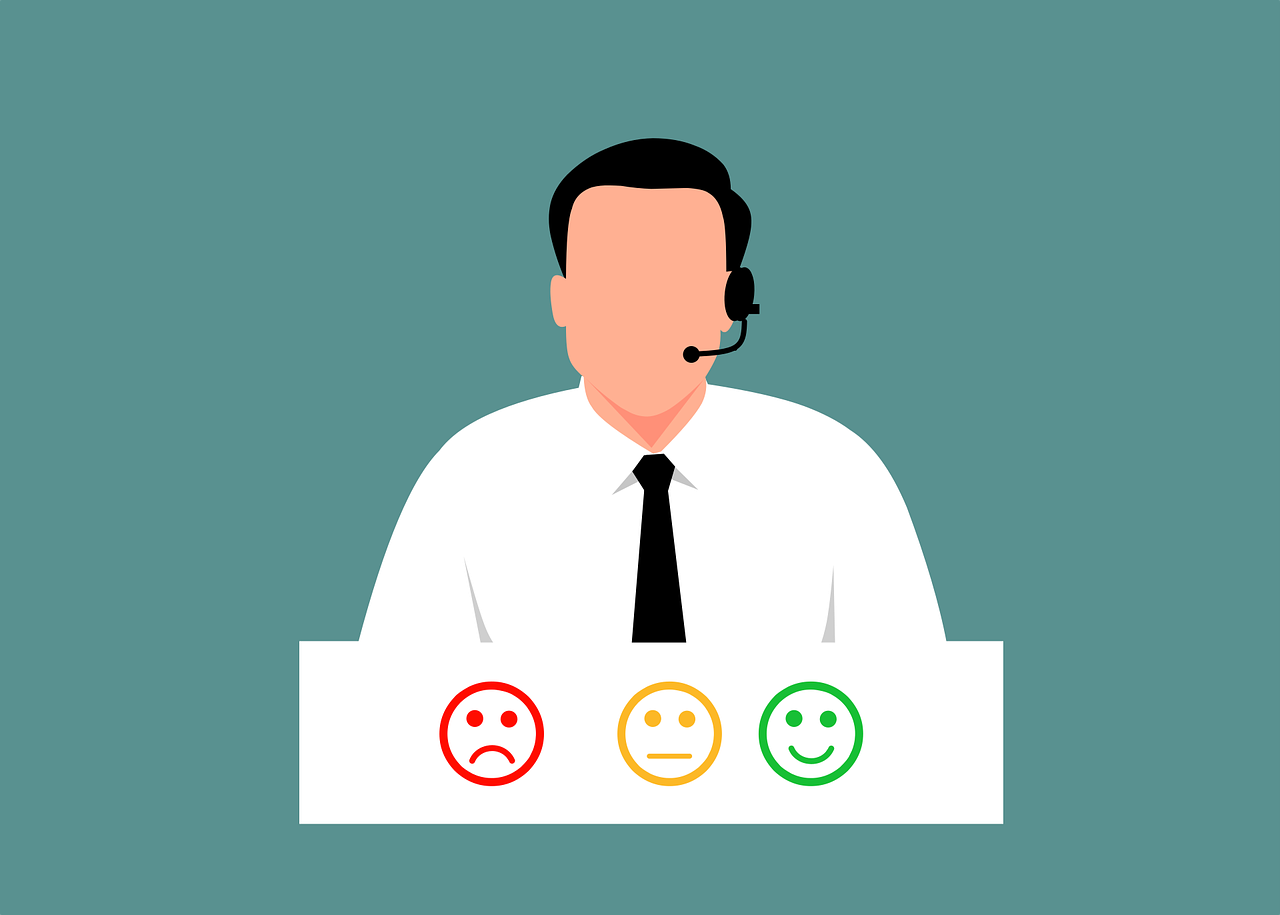Effective communication with customers is an important pillar of the functioning of any company. According to a New Voice Media report, as many as 86% customers say that positive communication and personalization of messages drive their loyalty to the brand. A company that can reach recipients and knows how to communicate with them has a better chance of achieving spectacular profits and being successful. The basis for building positive relationships with the target group is the communication strategy. How to prepare it?
What will you learn from the article?
Communication with customers is not only about exchanging information, but also about building relationships that translate into customer loyalty and satisfaction. Why is communication with customers so important? What strategies and tools should be used to make this process as effective as possible?
In this post, we will discuss what exactly a communication strategy is and how to prepare it properly. We will also present the different channels through which you can communicate with your customers and share four main principles that are worth keeping in mind. Finally, we will look at tools that facilitate online communication and the most common errors and problems that may arise.
If you want to improve the quality of customer service in your company and learn how to communicate effectively with customers, read on.
- Why is communication with customers so important?
- What is a communication strategy?
- Communication with clients - how to prepare a strategy?
- What channels should you use to communicate with customers?
- Communication with customers - 4 main rules
- Tools that facilitate communication with customers online
- The most common errors and communication problems
Why is communication with customers so important?
Customers are the most valuable link in the business. Their satisfaction should be the priority of every entrepreneur. IH Gordon, author of the book “Client Relations. Affiliate marketing ”, emphasizes that satisfied customers are the greatest asset of any company. The entrepreneur should foster relationships with his customers. Bad communication with customers it can ruin a company's reputation, even if the company is the best in its profession. Incorrectly chosen marketing communication channels, the lack of commitment on the part of the brand and improperly formulated messages have a negative impact on company imageand thus lower its credibility.
What matters in business is to build long-term ones customer relations. A wide group of regular, satisfied customers is a way to increase sales and generate high profits. A company that maintains a constant dialogue with its recipients has a greater chance of being successful than one that does not care about communicating with its customers. By cultivating relationships with your target group, you will maintain your competitive advantage in the marketplace.
By maintaining communication with customers at the highest level, you build a positive image of your brand. Satisfied customers are more likely to recommend your company to their friends, and thus you will reach a wide audience. Reference Marketing, i.e. promoting the company through satisfied recipients, is one of the best methods of acquiring new customers.
According to research, up to 9 out of 10 people trust customer opinions about a given company more than what the company says about itself. Nielsen's analyzes indicate that over 90% customers assess the recommendations of friends as credible, and almost 80% respondents are able to buy the recommended product under the influence of positive opinions of their loved ones.

The key to efficient and effective communication with customers is a well-thought-out strategy. What is a communication strategy? And how to prepare it?
What is a communication strategy?
Communication strategy is a set of rules and actions that a brand should take to effectively reach its customers, arouse their interest and sympathy. The strategy defines how the company should talk about itself and about its products or services. Because it is a kind of guide that facilitates the achievement of the intended communication goals. A way to reach the target group with your message and maintain a constant dialogue with them.
Are you looking for a way to reach your customers?
We will develop a precise communication strategy for you!
Communication with clients - how to prepare a strategy?
Preparing a communication strategy takes time and commitment. The process consists of 5 important steps.
1. Analysis of the initial situation
The first step in creating a communication strategy with customers is a detailed analysis of the brand's current situation. As an entrepreneur, you should be aware of whether your company's communication so far has brought the expected results - whether it reached the recipients, what ranges it generated, or whether the message was consistent. The audit of the activities carried out so far should include the language and form of messages as well as the specificity of the content on the website and in social media. It is also worth paying attention to:
- the environment in which the brand operates - the situation in the industry, economic situation, forecasts,
- competition - competition's offer, channels and methods of communication with customers, characteristics of target groups,
- brand image - customer opinions about the brand,
- SWOT analysis - brand strengths and weaknesses, opportunities and threats resulting from the environment.
2. Target group analysis
In the analysis target audience include information on the age, gender, interests, expectations and characteristics of the audience. Knowing the client's profile is an opportunity to prepare an effective communication strategy and create appropriate messages.
3. Set goals
The brand's communication goals should be clear, consistent with the company's vision and mission, and achievable over time. So it's worth setting short and long-term goals.
4. Defining the character of the brand
The brand must be made human. Because the key to creating an effective communication strategy is to define the brand's features and its greatest attributes - how the brand is perceived by others, how the brand wants to be perceived, what distinguishes it from the competition, by what values it follows. Moreover, communication with customers should be based on values important from the point of view of the brand and recipients - shared values.
5. Define an action plan
The plan should set out the detailed steps that the brand intends to take to reach its target audience and build long-term relationships with its audience. Therefore, the plan includes:
- big idea - a leitmotif that will guide all communication,
- tone of voice - how the brand will communicate with customers; these are characteristic features of the style of communication; tone of voice must be consistent, tailored to the needs of the recipients,
- communication contexts - what the brand intends to talk about,
- communication channels - in which channels the brand will communicate with its recipients.
In addition, the strategy should be constantly monitored and verified its effectiveness, and if necessary - modified. Only then can you achieve maximum results.
What channels should you use to communicate with customers?
Communication channels are places where the company builds relationships with customers. The channels can be divided into:
- online, i.e. online activities - blog, newsletter, social media,
- offline, i.e. traditional activities - leaflets, brochures, catalogs.
Today, online channels are in the lead. Through them, you can quickly and easily reach a wide range of customers, build strong relationships with recipients and maintain a continuous dialogue. The study "Brand communication - consumer expectations", conducted by SMSAPI in cooperation with BioStat at the end of 2018, showed that the main space for dialogue between brands and customers is the Internet. From the results of the analysis, we can read that the most effective communication channels include, among others e-mail and social media.

What's more, over 77% respondents indicated that what matters to them is the speed of response / problem resolution, so they prefer to choose those communication channels in which they will not have to wait long for feedback. It is especially appreciated social mediathat enable real-time messaging. Thanks to social media, the company can be closer to its customers on a daily basis, and thus has a chance to establish solid relationships based on trust.
Offline channels do not allow customers to communicate with the brand as quickly as online channels. However, it is not worth giving them up completely. They can be a good support for communication in online channels.
Communication with customers - 4 main rules
When communicating with a client, follow four important rules. Thanks to this, you will strengthen the positive image of your brand, build long-term relationships with recipients and reach new customers.
Principles of communication with clients:
- personalization of messages - create messages tailored to your recipients, refer to important values, influence emotions,
- commitment - show your recipients that they are important, get involved in building relationships with customers, reply to messages and comments, share interesting content about the brand created by customers,
- respect - customers are the pillar of a successful enterprise, so try to treat them with respect,
- consistency - create consistent, logical messages tailored to your recipients in each communication channel.
Summing up, effective communication with customers should be based on building long-term relationships governed by values such as loyalty and trust. Do you want to know what communication will work for your brand? Contact us - we will help you prepare an effective communication strategy.
Your customers aren't listening to your brand's voice?
We will make it change!
Tools that facilitate communication with customers online
Your customers would like you to answer their questions quickly and keep them informed about new products. Sometimes that's not possible, but the following customer communication tools can help you give the impression that you are in the office 24/7, responding to messages in no time. We present both advanced CMR systems and simple solutions for one-person companies.
"I will not double", "I don't have a hundred hands" - this is how entrepreneurs often explain themselves, who are unable to answer all the questions flowing to the company's inbox on an ongoing basis. The tools described below are mainly used to automate the process of communicating with customers. Once implemented, the business owner may get the impression that he actually has an extra pair of hands. See what tools are worth using and in which situations they work.
Sending newsletters – useful tips
Some people are afraid of the automation of the customer communication process. They have the impression that these are complicated systems that are difficult to implement and that you also have to pay for them. Meanwhile basic newsletter systems are free and very easy to use. They usually have a free shipping limit to several dozen or several hundred customers. Automatic collection of the e-mail database through a form on the website, and then mass sending of messages, significantly simplifies the process of planning communication with customers. Groups of recipients can also be segmented and write a separate newsletter for the most loyal customers, people who have not bought anything yet, etc. By the way, you follow and plan the customer path (more about it here: Customer journey - what is it and how to create it?)
Tools: Fresh Mail, Mailchimp, GetResponse
A knowledge base that will improve communication with customers
Most of the questions from customers are repeated frequently. You don't have to answer each such question separately. Send customers back to the knowledge basefrom which they will learn how to solve the most common problems. There are ready-made programs that allow you to create a section with frequently asked questions on the website. Break them down into sections such as shipping, orders, payments, etc. Another idea is a product forum where users can help each other with the operation or maintenance of the equipment.
Tools: HelpJuice, HelpDoc, Document360
Collect opinions about your services
Asking customers for references can be embarrassing for both parties. It very often happens that a very satisfied customer delays for weeks with the delivery of references. He doesn't have time, he doesn't know how to put into words what he thinks, or he just keeps forgetting it. That is why so many companies use ready-made tools to collect opinions and comments. All you need to do is add a link to a simple questionnaire at the end of one of the messages closing the transaction or order.
The client will be able to move within the ready frames, he can evaluate the service in points, add photos, and you get more opinions of better quality. You can also use this type of questionnaire to research the market and pre-qualify clients. A separate type of this type of questionnaire are links that will allow the customer to leave an opinion on a popular shopping website, such as Google, Ceneo or Skąpiec.
Tools: Survey Anyplace, Survay Monkey, Typeform

Software for communication with customers built into the website
According to JD Power data, 42 percent. of customers most willingly ask a question in the chat built into the website engine, while e-mail is preferred by 23%. people, and 16 percent. prefers an answer on social media or in a forum. However, it is not only about preferences. Quick answer to the question very often it translates into sale. A customer who has doubts, but has to wait for an answer on the hotline or send e-mails, may simply choose another seller's store. More about the so-called you will find a difficult client in this text: Customer Objections - How to Deal With Them?
Communication with customers is also supported by chatbots, which can complement the live chat on the website, e.g. after office hours. Theoretically, customers say chatbots are annoying and unhelpful. In practice, however, 37 percent of them admit that in an emergency situation they appreciate that the chatbot is able to immediately provide an answer or solve the problem. You can also use chatbots on social media. For many business owners, using Facebook on a daily basis is an additional hassle. In turn, customers do not like to wait several days for a response. Set up an automatic response or even a dialogue path in which the chatbot answers some of the most frequently asked questions.
Tools: BotUp, JivoChat, LiveChat, Netomi
Do you want to improve communication with your customers?
We have effective ways to do it!
Templates and other email sending tools
Every time a customer asks you a question, you don't have to re-construct the reply message. Create ready-made templates and save them in your e-mail box. Put in them:
- welcome,
- thank you for contacting us,
- link to additional information,
- footer.
When you get a message from a client, you only need to add a response to a specific problem, and your response will always look very professional. Of course you can too set up automatic sending of e-mails after each order, complaint or subscription to the newsletter. If you are not at the office or you cannot write back, set it autoresponder. Today's customers expect information immediately. Giving each case a number and informing about the next steps on a regular basis significantly improves communication with the client. You can also set up an automatic reminder if the client does not, for example, write back or pay you within the allotted time.
All this helps a lot in everyday work and makes it easier crisis management. The communication with the client or journalist will be completely different if they receive a reply to the message with the estimated waiting time and a set of data that may be useful to them (e.g. referral to the FAQ, emergency hotline, etc.).
Tools: Boomerang, ConvertKit, Mailjet
CMR customer communication systems
CMR is a system for managing communication with customers. There you can place contact details of all customers, information about their orders, complaints or requests, as well as plan campaigns and send information or gifts from the company. Most of these systems are paid, but in a small shop or sole proprietorship you can do it more easily by entering customer information on any sheet and then planning communication strategy in time management tools.
In more complex programs, you can plan the entire process of solving specific problems that customers report, e.g. complaints. You assign tasks, set a time frame for each stage and control how many conversations with the client took place.
Tools: Hubspot, Zoho, Agile, Asana, Trello, Wrike, ZenDesk

The most common errors and communication problems
Solving customer problems and conducting effective communication are crucial to the success of any company. The most common mistakes and communication problems can lead to customer frustration and, consequently, to loss of loyalty and decreased sales. It is important to identify these problems at an early stage and use appropriate communication techniques to help solve them.
Effective communication not only increases customer satisfaction, but also builds long-term relationships based on trust. Thanks to this, companies can increase their visibility and attract new customers, which is invaluable in a competitive market environment.

Summary
Have you ever wondered why some companies, despite the fact that they do not stand out with anything special from others, are able to keep customers with them and are extremely popular on the market? It is often the fruit of effective communication with customers. Enterprises that focus on trust-based long-term customer relationships and care for their recipients have a greater chance of success than companies with an inadequately planned external communication policy. How to communicate effectively with customers and be successful in the market?
Currently, in the era of highly developed and constantly moving forward internet, communication with clients takes place mainly online. The key to effective communication is the selection of appropriate communication channels. The most popular solutions are e-mail and social media - including Facebook and Instagram. The channels should be adjusted to the preferences and characteristics of the target group. Therefore, the first step should be a detailed analysis of recipients, taking into account their detailed data, expectations, features, etc.
Communication with customers is not a universal solution. The language of the messages sent should also fit the target group. A dentist's office or a law firm will communicate with clients differently than a streetwear youth store, whose target group is mainly young people. Matching the language of communication to the specificity of a given group is a guarantee of success.
Take care of the quality of the messages sent. Put your customers' needs first. Relate to the values that are important to them. Emphasize their importance for the development and functioning of the company. Always give feedback. Communication with customers based on clear rules is an opportunity to keep customer satisfaction at the highest level. And remember that satisfied customers are excellent company ambassadors!

